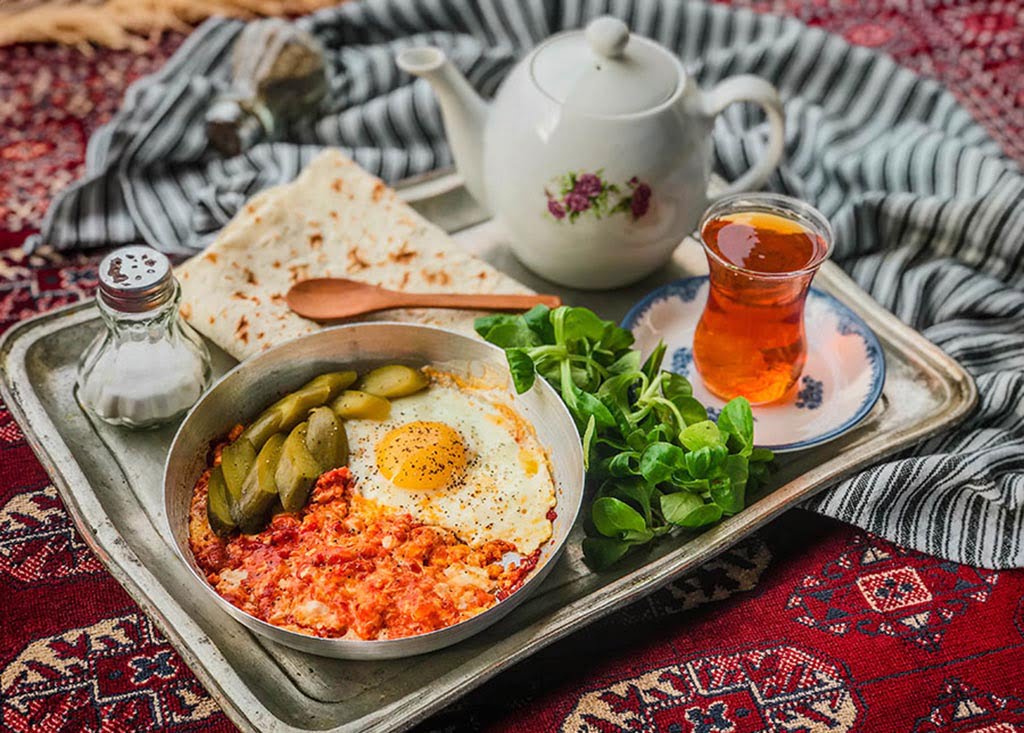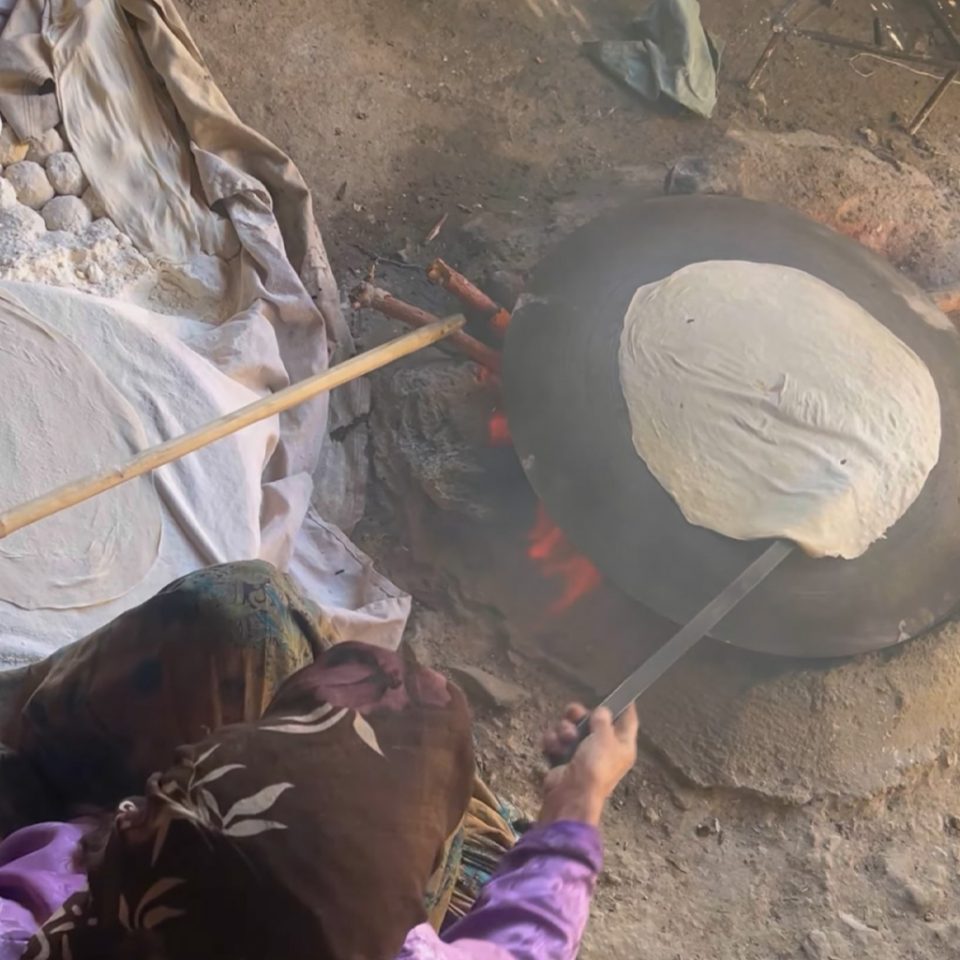The nomadic way of life has always fascinated people with its simplicity, resilience, and resourcefulness. The nomads’ ability to adapt to their environment and create delicious food using simple ingredients is a testament to their ingenuity and creativity. One such example is the art of baking nomad omelets by women, which is a tradition that has been passed down from generation to generation.
In this post, we will take a closer look at the process of baking nomad omelets by a nomad woman named Fatima. Fatima is a member of the Bakhtiari tribe, which is one of the largest nomadic tribes in Iran. She has been baking omelets for her family and the community for many years and has perfected the art of making them.
Omelet world
History of omelet
Omelets are a dish that has been enjoyed by people all around the world for centuries. The exact origins of the omelet are unclear, but some historians believe that it may have originated in ancient Persia or even ancient Rome.
In Persia, a dish similar to an omelet was made with eggs, herbs, and spices, and was called “kookoo”. This dish was typically served as a side dish or appetizer and was often eaten with bread or rice.

In ancient Rome, a dish called “ovemele” was made with eggs, milk, and honey, and was often served as a dessert. This dish was similar to a sweet omelet, and was sometimes flavored with cinnamon or other spices.
Over time, the omelet became a popular dish throughout Europe, and many different variations were developed. In France, the classic French omelet was developed, which is made with eggs, butter, and a filling of your choice. In Spain, the tortilla de patatas, which is a potato omelet, became a staple dish.
In the United States, omelets became popular in the early 20th century and were often served as a breakfast dish. Today, omelets are enjoyed all around the world and can be made with a wide variety of ingredients, including vegetables, meats, and cheeses. They are versatile and delicious dishes that can be enjoyed at any time of day.

Types of omelet
There are many types of omelets, each with its own unique ingredients and flavors. Here are some of the most popular types:
- Classic Omelet: Made with eggs, butter, salt, and pepper, this is the most basic and simple type of omelet.
- French Omelet: A classic French omelet is made with eggs, butter, salt, and pepper, and is rolled rather than folded. It is typically cooked until it is slightly runny on the inside.
- Spanish Omelet (Tortilla Española): Made with potatoes, onions, and eggs, this omelet is a staple of Spanish cuisine.
- Persian Omelet: This omelet is made with diced tomatoes, butter, and mixed eggs. This omelet is a popular breakfast in Iran.
- Frittata: This Italian omelet is typically made with eggs, cheese, and vegetables, and is cooked on the stovetop and then finished under the broiler.
- Denver Omelet: Made with diced ham, green peppers, onions, and cheese, this omelet is a classic American breakfast dish.
- Greek Omelet: This omelet is made with feta cheese, tomatoes, onions, and spinach, and is a popular breakfast dish in Greece.
- Mexican Omelet: This omelet is made with diced tomatoes, onions, jalapeños, and cheese, and is often served with salsa and guacamole.
- Western Omelet: Similar to the Denver omelet, the western omelet is made with ham, peppers, and onions, but also includes diced tomatoes.
- Vegetarian Omelet: This omelet can include any combination of vegetables, such as mushrooms, peppers, onions, spinach, and tomatoes, and is a great option for those who don’t eat meat.
Overall, the possibilities for omelet fillings and ingredients are virtually endless and can be customized to suit individual tastes and preferences.
Cooking nomad Omelet: nomad way
The process of making a nomad omelet is straightforward, but it requires patience and attention to detail. Fatima starts by preparing the ingredients, which include eggs, salt, pepper, and herbs such as parsley, cilantro, and scallions. She gathers the eggs from the chickens that roam around the nomad camp and washes them thoroughly.
Once the eggs are clean, Fatima breaks them into a bowl and adds salt, pepper, and herbs. She then beats the eggs with a fork until they are well-mixed and frothy. The key to a good nomad omelet is to make sure that the eggs are beaten well and have enough air incorporated into them.
After the eggs are beaten, Fatima heats up a cast-iron skillet over an open flame. She adds a tablespoon of oil or butter to the pan and swirls it around to coat the bottom evenly. Once the oil is hot, she pours the egg mixture into the pan, ensuring it spreads evenly.
As the nomad omelet cooks, Fatima uses a spatula to lift the edges and allow the uncooked eggs to flow underneath. She repeats this process until the nomad omelet is fully cooked and golden brown. The result is a delicious, fluffy nomad omelet that is bursting with flavor and nutrition.
Nomad Omelet is a staple food for nomads, often served with flatbread, yogurt, and fresh herbs. It’s a simple yet satisfying meal that provides energy and sustenance for the nomads as they move from one place to another. In addition to its nutritional value, the nomad omelet also plays a vital role in nomadic culture and social life.
Baking the nomad omelet is not just a means of providing food for the nomads, but it’s also a way to connect with their cultural heritage. The process of making an omelet is often a communal activity, where women gather to share stories, exchange recipes, and bond with one another. It’s a time to socialize, relax, and enjoy the simple pleasures of life.
In conclusion, the art of baking nomad omelet by nomad women is a beautiful and essential part of their cultural heritage. It’s a tradition passed down from generation to generation and embodies the nomads’ resourcefulness, resilience, and creativity. Through their baking practices, nomads not only provide sustenance for their families but also preserve their unique way of life. As we continue to learn about different cultures and traditions, it’s important to appreciate and celebrate the diversity of our world and support initiatives that promote their preservation and sustainability.
Furthermore, the art of baking omlette also showcases the nomads’ deep connection to nature and their environment. The eggs used in omlette are often collected from the chickens that roam freely around the nomad camp, feeding on natural vegetation and insects. The herbs used in omlette are often gathered from the surrounding area, adding a unique flavor and aroma to the dish.
The nomads’ close relationship with nature is not only reflected in their food but also in their way of life. Nomads have a deep respect for the land and the animals that inhabit it, and they have developed sustainable practices to ensure that their way of life does not harm the environment. For example, they move their camps seasonally to allow the land to rest and regenerate, and they only hunt and fish for what they need.
Baking omelet is just one example of the nomads’ culinary traditions, which are as diverse and unique as the nomads themselves. Each tribe has its own way of making omelets, with variations in ingredients, cooking methods, and presentation. By preserving these traditions, the nomads ensure the survival of their cultural heritage and contribute to the diversity and richness of the world’s culinary traditions.
As we look to the future, it’s important to recognize the challenges that the nomads face, such as climate change, urbanization, and loss of grazing land. Initiatives are being taken to address these challenges and to support nomads in preserving their way of life. Nomad tourism, for example, is becoming increasingly popular in Iran, allowing nomads to share their culture and generate income from their skills.
In conclusion, the art of baking omelets by nomad women is a beautiful and essential part of nomadic culture and heritage. It showcases the nomads’ resourcefulness, resilience, and deep connection to nature. By preserving these traditions, we honor the nomads’ way of life and contribute to the diversity and richness of the world’s culinary traditions.











